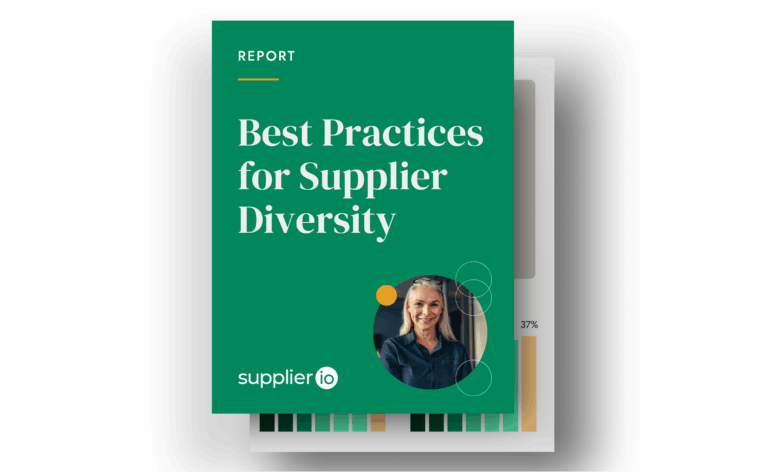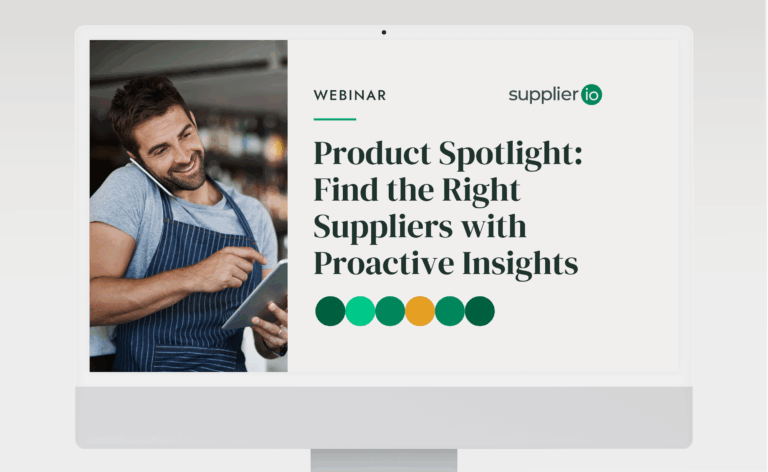3 Ways to Elevate ESG Performance in Your Supplier Base
Overcome ESG challenges with better supplier data and deeper relationships. 3 strategies to strengthen your data and elevate ESG performance.

ESG performance and supplier intelligence can be seen in 9 out of 10 of The Hackett Group’s Top 10 procurement priorities for 2024.
Surprised? You shouldn’t be. Implementing a mature ESG supply chain program has proven, time and time again, to unlock a multitude of benefits, from reducing costs and improving brand image to increasing resilience and ensuring supply continuity.
Put simply: ESG is now foundational to supply chain performance. But despite the criticality, many enterprises are struggling to with where to start and how to get traction. The challenges can feel immense: Stakeholders are increasing pressure. Regulators are moving fast. Resources are limited. ESG data is scattered and sometimes unreliable. And for most, supply chain visibility remains muddled, at best.
Overcoming these challenges requires better supplier data and deeper supplier relationships. Here are three strategies to strengthen your data foundation and elevate ESG performance.
Be More Intentional About Supplier Intelligence and Procurement Data
Reliable data is the foundation of every ESG initiative. You can’t improve what you can’t see, measure or trust. Yet many companies are still relying on self-assessments to categorize suppliers and baseline sustainable spending – which is a big problem, given that self-reported data can be up to 50% inaccurate.
Even those that rely on credible sustainability ratings face challenges. Within the typical enterprise, spend data is often fragmented across procurement systems (e.g., ERPs, suites, and spreadsheets), within business units (e.g., accounts payable and supply chain), and with the suppliers themselves. The ESG ratings ecosystem is also very cluttered, with different providers offering different ratings for different practices and accomplishments. This makes aggregating and acting on ESG data challenging, to say the least.
Getting a better handle on your data is a critical first step for improving ESG performance – but you can’t go at it alone. Today’s market requires specialized talent, technology, and data enrichment services that can aggregate and analyze, comprehensively, the most credible supplier intelligence and ESG ratings in a single platform. Taking a specialized approach like this overcomes two of the biggest ESG hurdles teams face – data silos and self-assessments – and gives procurement team’s a clear window into how and where they can improve ESG outcomes.
This approach is backed up by KPMG’s 2024 organizational ESG study. KPMG found that 90% of respondents surveyed plan to increase ESG investments over the next three years, with 43% investing in ESG personnel and 40% investing in ESG-specific software.
Prioritize Scope 3 Emissions Analysis and Make Data-Based Decisions
With increasing pressure from consumers, stockholders, and employees, along with changes to the regulatory landscape in the EU and California, enterprises are under pressure to disclose progress. While ESG encompasses a lot, today, the spotlight is shining brightest on the environmental elements, specifically Scope 3 greenhouse gasses.
This is a logical focus area for regulators and enterprises. Most of a company’s environmental impact is created by its supply chain. Supply chains account for, on average, 75% of a company’s greenhouse gas emissions – which makes addressing Scope 3 critical for reducing footprint and moving towards Net Zero. However, Scope 3 is often the most difficult to define and track, since it requires a holistic view of your suppliers and the ability to collect, measure, and incorporate third-party data.
Despite the complexity, the “E” in ESG must be prioritized. Along with regulatory deadlines and consumer interest, companies also face the pressure of their own making. Remember all those “we’re going to hit Net Zero by year 2000-something” commitments from the past five years? Companies will need to cash those checks soon — or risk facing major public blowback.
This is where clean data, specialized ESG technology, and reliable supplier intelligence come into play. Procurement and supply chain teams that have credible ESG data at their fingerprints can analyze where they stand today and make proactive decisions to improve. This includes deciding which suppliers they should give more business to, how and where to reduce emissions, and which suppliers will ultimately need to be replaced. The key, of course, is taking action. Reporting isn’t enough.
Build Consensus by Focusing on the Impact
The best way to build a business case that secures specialized technology, resources, and expertise for your ESG program is to focus on three areas: business ROI, compliance ramifications, and social impact.
The business case is typically the easiest to make. As mentioned earlier, a sound ESG strategy positively affects a multitude of organizational objectives. It makes businesses more competitive and can drive both top and bottom-line growth. Compliance should also be an easy sell. Reporting mandates are right around the corner, and failing to comply will have meaningful financial and reputational impacts on the business.
A strong ESG program also impacts the communities you serve — which, oddly enough, is an often overlooked proof point for building program support. Over the past five years, more and more companies have been conducting economic and environmental impact assessments to determine and showcase the tangible effects of their responsible sourcing decisions. These impact assessments are completely customizable. The typical report examines how ESG programs contribute to climate change, job creation, tax contributions, small business support, and wages earned, among other KPIs — all of which combine to create a powerful narrative. For instance, Supplier.IO’s 2023 Economic Impact Report found that leading organizations generated over 1.3 million jobs, $104 billion in income, and $31.4 billion in tax revenue in 2023 simply by spending with small and diverse businesses.
Data Drives ESG Action
Reliable supplier intelligence is fundamental to ESG performance and the number one investment organizations should make when looking to improve operations. It’s the lever that makes everything else go. Without accurate data, you can’t see where you are at risk. You can’t confidently prove compliance or meet your Net Zero goals. And you will have no basis for making the decisions necessary to improve ESG outcomes.




